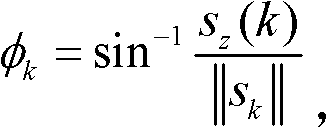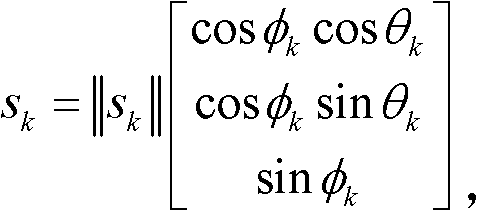Passive target location method based on maximum likelihood estimation
A technology of maximum likelihood estimation and target positioning, which is applied in the field of passive target positioning based on maximum likelihood estimation, and can solve the problem of low target positioning accuracy.
- Summary
- Abstract
- Description
- Claims
- Application Information
AI Technical Summary
Problems solved by technology
Method used
Image
Examples
Embodiment Construction
[0047] The present invention will be described in detail below in combination with specific embodiments.
[0048] Assuming that in three-dimensional space, p represents the position of the target, there are 3 passive sensors to measure the position of the target, and the position of the sensor is s k , k=1, 2, 3, the subscript k indicates the number of the sensor. The passive sensor obtains the angle measurement information of the target, namely: deflection angle θ k and pitch angle φ k . (Note: In the passive positioning algorithm, the situation of 3 sensors is usually studied, because other situations can be easily derived from this result.) According to the geometric and triangular relations, there are the following relations:
[0049] θ k = tan - 1 s y ( k ...
PUM
 Login to View More
Login to View More Abstract
Description
Claims
Application Information
 Login to View More
Login to View More - R&D
- Intellectual Property
- Life Sciences
- Materials
- Tech Scout
- Unparalleled Data Quality
- Higher Quality Content
- 60% Fewer Hallucinations
Browse by: Latest US Patents, China's latest patents, Technical Efficacy Thesaurus, Application Domain, Technology Topic, Popular Technical Reports.
© 2025 PatSnap. All rights reserved.Legal|Privacy policy|Modern Slavery Act Transparency Statement|Sitemap|About US| Contact US: help@patsnap.com



